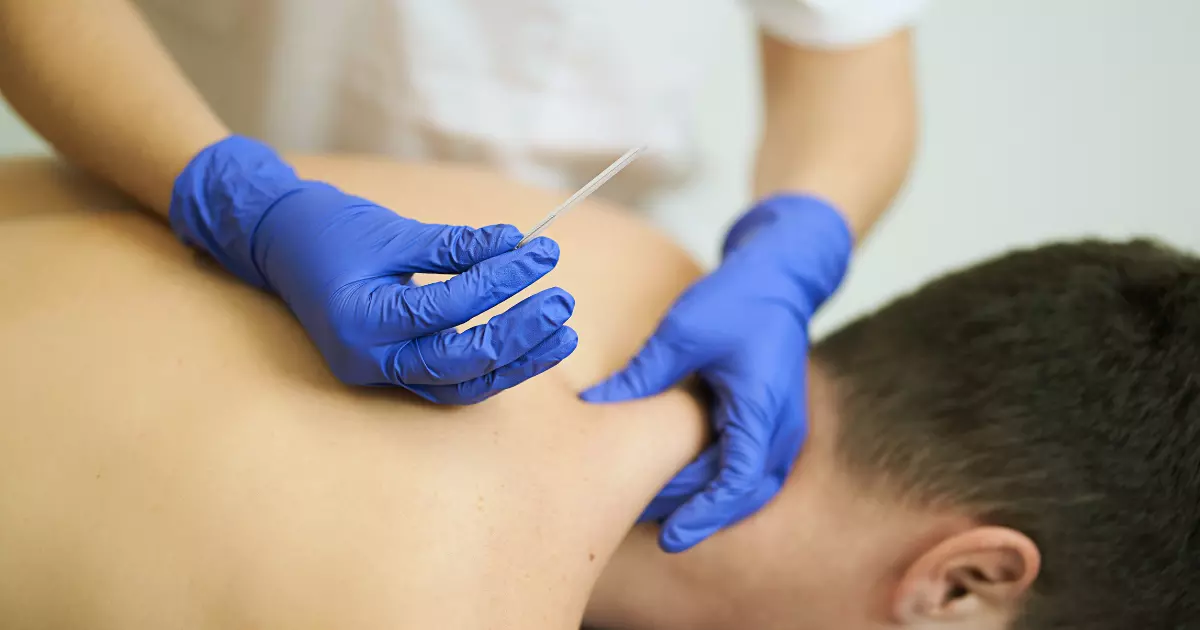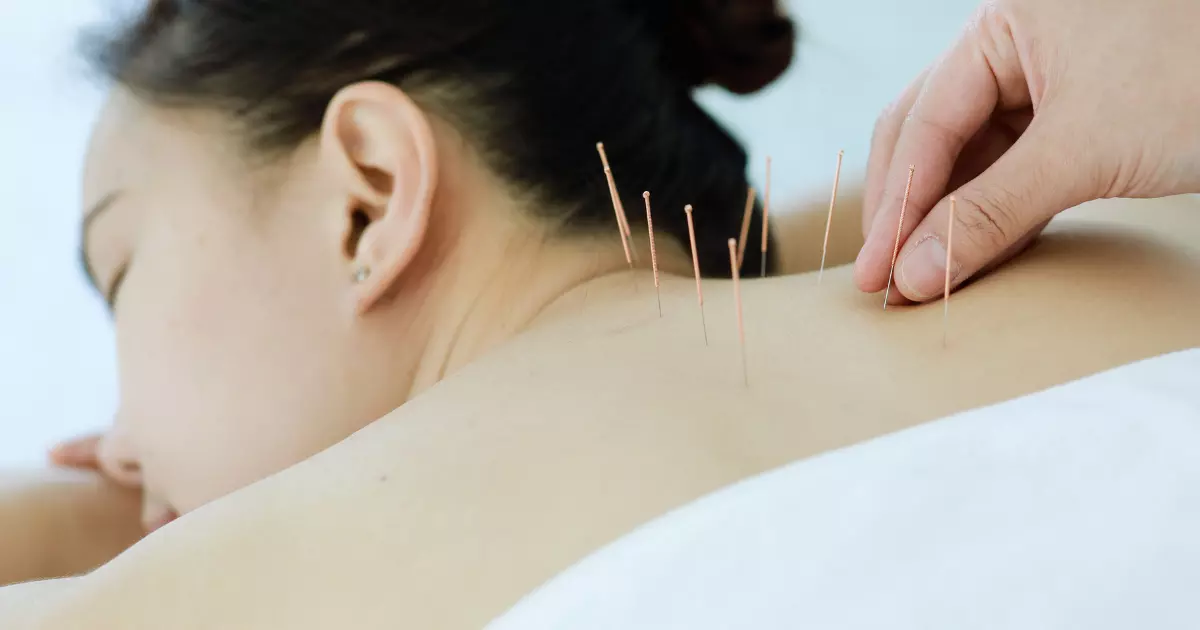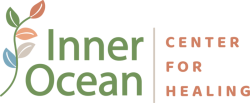Dry needling and acupuncture are two popular options for pain relief and holistic healing. Knowing the differences can help you decide which type of treatment is right for you. While both involve fine needles, they have distinct approaches and benefits. Dry needling targets specific muscle trigger points to alleviate pain and improve mobility. On the other hand, acupuncture is deeply rooted in Traditional Chinese medicine. It focuses on balancing the body’s energy flow or Qi.
This article will delve into the nuances of dry needling vs. acupuncture. We’ll share key points to help you make an informed decision for your well-being. Read on to discover which therapy may be the right fit for you.
What is Dry Needling?

Dry needling is a modern treatment technique that uses a thin filament needle to target and treat muscular pain, tendons, and nerves. It helps relax muscles and makes movement easier. It is effective for treating chronic pain and other painful conditions such as plantar fasciitis, headaches, back pain, sciatica, and muscle strains.
The process involved can vary depending on the individual and their specific condition. But for most cases, practitioners often use a sterile needle when treating patients. They put the needle into tight muscle spots to get a twitch response. This twitch response helps release muscle tension and promote healing.
What Are The Different Dry Needling Techniques?
Dry needling is a technique utilized by healthcare professionals, including physical therapists, to treat musculoskeletal conditions. This treatment uses thin, clean needles just like those in acupuncture. The primary goal of dry needling is to relieve muscle tension, treat chronic pain, and improve a wide range of motion. Here, we explore various techniques used in this treatment and their intended effects.
Intramuscular Stimulation
Intramuscular stimulation or IMS is commonly used to treat conditions such as myofascial pain syndrome, chronic muscle strain, and fibromyalgia pain. It targets myofascial trigger points that are causing pain and muscular issues. The needle is inserted into the trigger point to elicit a twitch response from the muscle. This is to release muscle shortening, alleviate pain, and restore function. The twitch response is a sign that the tight muscle fibers are relaxing.
Superficial Dry Needling
This technique is often used for sensitive areas. It involves putting needles under the skin but not deep into the muscles. It targets trigger points and specific areas around superficial nerves to treat musculoskeletal issues. This increases the proper flow of blood, reduces localized inflammation, and promotes healing. It is helpful for new patients because they may be more sensitive to deeper needle penetration.
Deep Tissue Dry Needling
In this technique, needles are inserted more profoundly into the muscle tissue. It targets deeper layers of muscle to reach deeper-seated trigger points that superficial needling cannot address. This is an effective technique for releasing tension in larger or deeper muscles. It helps with deep muscle problems like those in the buttocks, hip flexors, or deep back muscles.
Pistoning or Pecking Technique
The in-and-out technique, also known as pistoning, is a method in which the needle is inserted directly into the trigger point (without entirely removing it). This is to stimulate a larger area within the trigger point and elicit multiple twitch responses. This technique gives a therapeutic effect on stubborn trigger points that do not quickly release with a single needle insertion.
Non-trigger Point Technique
The needles are inserted into the areas surrounding the myofascial trigger points. It helps reduce muscle tension and pain in the surrounding tissue and potentially leads to an indirect release of the trigger point. It is ideal for areas with diffuse pain or when direct needling of a trigger point is too painful. The non-trigger points technique is designed to treat the central nervous system, as it operates under the notion that pain is caused by underlying nerve or muscular problems.
Electro Dry Needling
A gentle electrical current is passed through the needles after insertion into the trigger points. It stimulates the muscle constantly which helps relax it and relieve pain. This is often used for more chronic conditions or when traditional dry needling has not achieved the desired effect. In certain instances, electrical stimulation may be used on the needles to enhance the pain-relieving effects of the treatment.
What is Acupuncture?

Acupuncture treatment originated in Traditional Chinese Medicine. It involves the insertion of thin acupuncture needles into specific points on the body to stimulate its natural healing process. This practice believes that channels called meridians exist throughout the body and connect acupuncture points. These pathways allow the energy (also known as Qi) to flow freely and smoothly within the body. This technique can be used for a variety of medical conditions. It doesn’t just treat symptoms or one area of pain. Instead, it offers holistic treatment. It aims to improve overall health by improving blood flow, reducing swelling, and making you feel better.
Here are the benefits of acupuncture:
- Pain Relief. It is well-known for easing different types of pain. Especially chronic ones. This is effective in addressing musculoskeletal pain, and chronic back, neck, and knee pains caused by osteoarthritis.
- Stress and Anxiety Reduction. Acupuncture helps reduce stress and anxiety. It regulates the body’s stress responses and promotes relaxation. Patients often feel more energetic and happier after acupuncture.
- Improved Sleep. Acupuncture therapy can help treat insomnia and improve overall sleep quality. The trigger points influence the body’s neurotransmitters related to relaxation and sleep.
- Enhanced Digestive Function: Acupuncture stimulates specific body points to regulate digestive function, enhancing gut health. This practice can balance the energy pathways, reducing symptoms like bloating and indigestion.
- Headache and Migraine Relief. Acupuncture targets certain points in the body to enhance energy pathways. This can lessen headaches and migraines by easing stress and promoting calm. It may also boost natural pain relief and improve blood circulation, helping to reduce these conditions.
- Immune System Boost: Acupuncture can boost your immune system. It stimulates your body’s natural defenses. Thus, you can fight illnesses and infections. Aside from that, it also improves blood circulation.
- Alleviation of Chemotherapy Side Effects. Acupuncture can ease chemotherapy side effects. It helps with issues like nausea and vomiting. This is beneficial for improving quality of life, especially for people with cancer.
- Reduction of Eye Strain. Acupuncture can help reduce eye strain. It can also treat eye conditions such as myopia (short-sightedness) and hypermetropia (long-sightedness).
- Fertility Enhancement. Acupuncture can help fertility by boosting blood flow to reproductive organs and making them work better. It can also help balance hormones, reducing stress that can affect fertility.
- Menstrual and Menopause Symptom Relief. Acupuncture can ease menstrual cramps by controlling hormones and lessening pain and discomfort. For menopause, it can assist with issues like feeling hot and moody by balancing hormones and promoting relaxation.
Dry Needling and Acupuncture: What’s The Difference?
Dry needling and acupuncture are often confused as similar practices due to their shared use for therapeutic purposes. People often mix them up because both use needles. However, they are different in their history, theory, techniques, and goals.
Historical Origins
Acupuncture is an ancient technique and form of medicine that is part of Traditional Chinese medicine (TCM). The practice has been used for thousands of years following the Chinese philosophy and medicine.
Dry needling is a modern technique developed in the 20th century. It is based on Western medicine and neurophysiological principles. This method is similar to acupuncture and can assist in reducing pain and improving recovery in physical therapy and sports medicine.
Theoretical Foundations
In acupuncture, the concept of Qi or life energy flows through the body via meridians. By inserting needles on acupuncture points, it aims to balance the flow of Qi in the body to restore health and prevent disease.
On the other hand, dry needling does not adhere to the concept of Qi or meridians. Instead, it aims to reduce muscle pain and improve function by targeting tight knots in muscles called “myofascial trigger points”. These knots can cause discomfort in a larger area.
Techniques and Application
Acupuncture is a treatment where needles are placed at specific points on the body to restore energy balance. These points may not be near the pain. Licensed acupuncturists choose the area where there is an imbalance in the body.
For dry needling, it uses needles to relieve muscle tension and neck pain. Practitioners find the muscle trigger points through touching and certain tests. Then, they insert needles to make the muscles twitch and relax.
Therapeutic Goals
Dry needling and acupuncture differ in their therapeutic goals. Dry needling primarily focuses on relieving muscular tension, knots, and trigger points to alleviate pain and improve muscle function.
In contrast, acupuncture is rooted in Traditional Chinese medicine. It aims to balance the body’s flow of energy, known as qi, to address a wide range of health issues beyond just musculoskeletal problems, including emotional well-being and internal organ function.
Training and Practitioners
Expert acupuncturists receive extensive training in Traditional Chinese medicine. They need a license to practice it. Their education includes good medicine acupuncture, dietary therapy, and other aspects of TCM.
Dry needling is practiced by physical therapists, chiropractors, and some medical doctors. They receive advanced training for this technique as part of their medical or physical therapy education.
Wrapping Up
Dry needling and acupuncture involve the insertion of thin needles. Dry needling primarily targets muscular trigger points to alleviate pain and improve muscle function. On the other hand, acupuncture offers a holistic approach that considers the body’s energy flow and aims to promote overall well-being. With its long history of effectiveness in treating various conditions, acupuncture offers benefits beyond just pain relief, such as stress reduction, improved sleep, and enhanced immune function.
For those seeking the comprehensive benefits of acupuncture, Inner Ocean Center of Healing provides expert care tailored to your specific needs. Take the first step towards optimal health and wellness today. Contact us to schedule your appointment and discover the healing potential of acupuncture.

